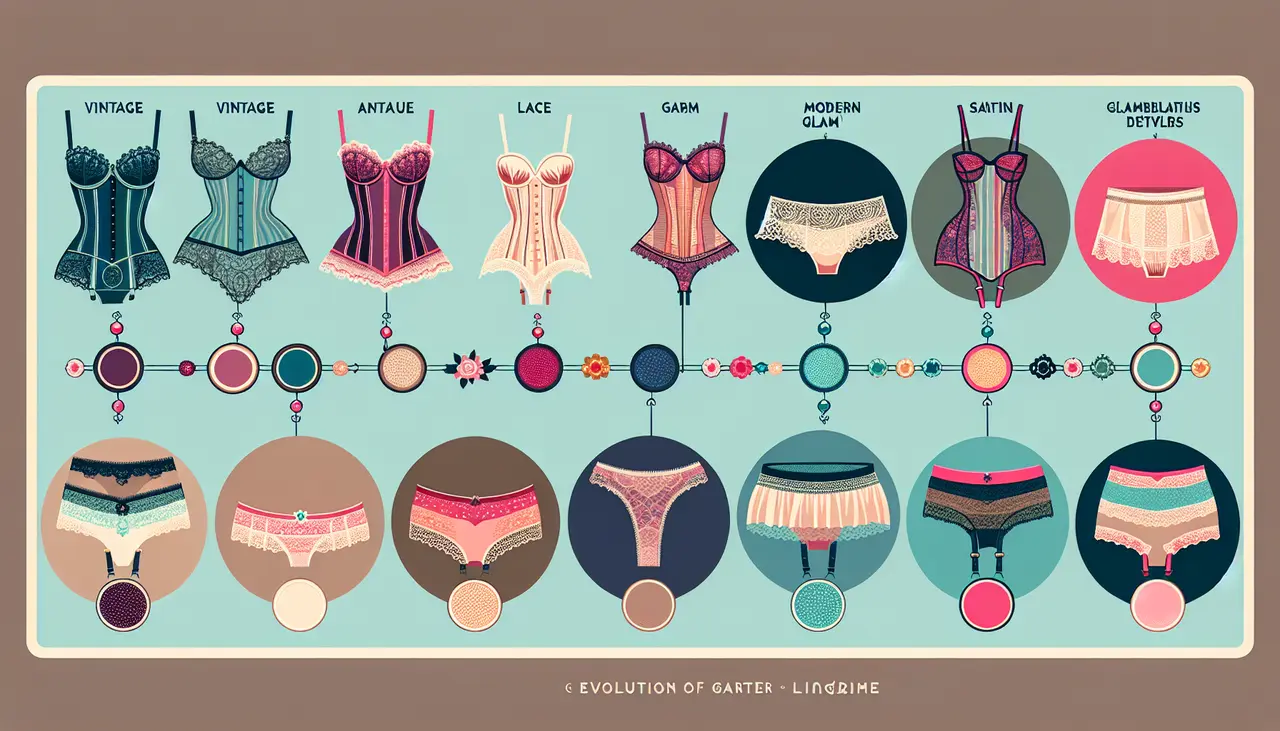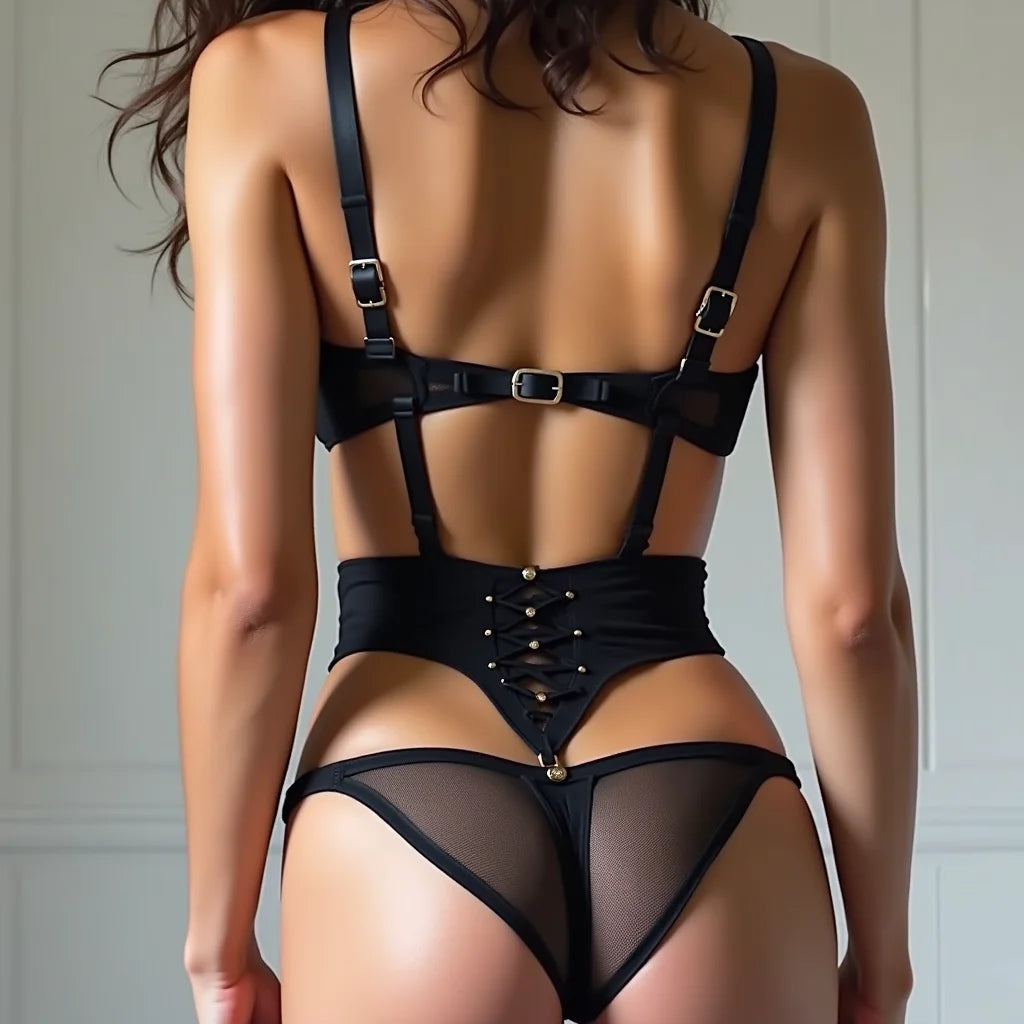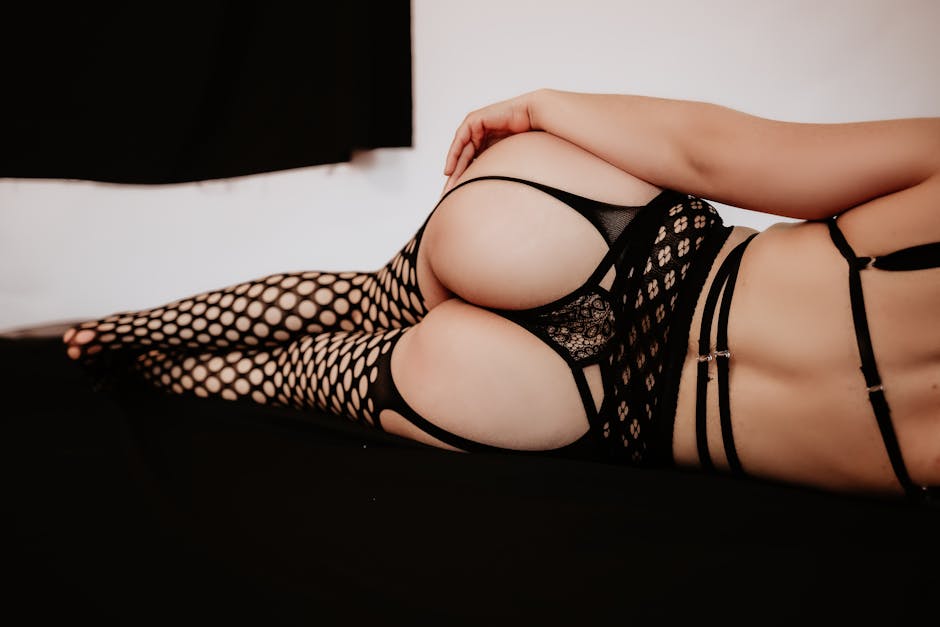The Evolution of Garter Lingerie: From Vintage Chic to Modern Glam
Introduction to Garter Lingerie: A Timeless Fashion Piece
Garter lingerie has always been a fascinating item in the world of fashion. Centuries ago, it started as a practical tool for holding up stockings. These weren’t just any stockings; they were thick, woolen garments essential for warmth in the days before central heating. Imagine trying to keep those up without an elastic band! Fast forward to the 20th century, and garter belts transition into a symbol of allure and style. Today, combining both function and fashion, garter lingerie represents timeless elegance. Whether part of bridal wear or a bold fashion statement, garters have a unique way of blending vintage charm with modern sophistication. So, when we talk about the evolution of garter lingerie, we’re exploring a rich history of not just clothing, but how society views femininity and style. It’s more than undergarments; it’s a piece of fashion’s history that continues to evolve while holding on to its classic roots.
The Origins of Garter Lingerie: A Historical Overview
The garter lingerie we see today didn’t just appear out of nowhere. Its roots go way back, starting as a practical solution before it became the symbol of glamour it is today. Originally, garters were bands of fabric used to hold up stockings in an era before elastic. Around the 14th century in Europe, both men and women used them for this very purpose. Fast forward to the 20th century, the invention of elastic made garters largely unnecessary for practical use, yet they didn’t vanish. Instead, they evolved. The 1920s and 1930s saw garter belts become a staple of female fashion, shifting their role from necessity to a statement of style and femininity. By the time the 1940s and 50s rolled around, they symbolized the height of female allure, intricately tied to the glamour of pin-up models and movie stars. Today, garter lingerie combines both vintage charm and modern aesthetics, reflecting an evolution from functional garment to an iconic piece of seductive fashion. This transformation mirrors wider societal changes in attitudes towards femininity, body image, and sexuality.
The 1920s to 1940s: The Golden Age of Garter Lingerie
Back in the 1920s to 1940s, garter lingerie wasn’t just underwear; it was a symbol of the glamorous yet unattainable fashion of the Golden Age. Picture this: women elegantly dressed in silk and lace, with garter belts holding up their stockings, an essential part of their daily wear. It was more than style; it was a necessity. Without the modern elastic we take for granted today, garters were the go-to solution for keeping stockings up. But it wasn’t all function over form. These pieces were detailed with exquisite designs, embodying the luxurious and sophisticated fashion of the era. This period laid down the foundation for garter lingerie, making it a symbol of allure and style. It wasn’t just about keeping stockings in place; it was a fashion statement, a sign of femininity and grace. As we moved through the decades, the essence of garter lingerie from the Golden Age would evolve, setting the stage for the modern interpretations we see today.
Transitioning Styles: Garter Lingerie in the 1950s and 1960s
In the 1950s and 1960s, garter lingerie wasn’t just underwear; it was an essential part of a woman’s wardrobe. Back then, women wore stockings daily, and garter belts were the go-to solution to keep them in place. The style was all about functionality blended with femininity. During the 1950s, the garter belts were often high-waisted, designed to sculpt the waist and smooth the silhouette under the full skirts that were in vogue. They were less about seduction and more about structure and support. Moving into the 1960s, fashion took a turn towards the more daring and bold, influenced by the youth culture and liberation movements. This shift was reflected in lingerie styles as well. The garter belts became simpler and more streamlined, designed to fit under the slimmer, more form-fitting dresses of the era. Lace and satin were popular materials, adding a touch of elegance and sensuality that hinted at the more liberated approach to fashion and femininity. This period set the stage for the evolution of garter lingerie from strictly practical undergarments to pieces that balanced practicality with an increasing focus on aesthetic appeal.
The Revolution: Garter Lingerie in the 1970s and Beyond
The 1970s marked a turning point for garter lingerie, shifting from function to high fashion. Before this era, garter belts served mainly to hold up stockings. Simple. But as fashion evolved, so did the purpose of garter lingerie. It wasn’t just about practicality anymore; it was about making a statement. In the ‘70s, the feminist movement and the sexual revolution gave women a new sense of freedom and confidence, both in society and in how they dressed. Garter lingerie began to symbolize empowerment, a far cry from its purely utilitarian roots.
Designers took notice, and by the late ‘70s, garter belts and stockings were being crafted not just for their original purpose but to enhance a woman’s sex appeal. They became more intricate, with lace, silk, and even jewels. Fashion shows and magazines started to feature garter lingerie, further cementing its place as a symbol of allure and sophistication.
The trend didn’t stop there. Fast forward to today, garter lingerie blends vintage chic with modern glam. It’s no longer hidden away but proudly displayed as a statement piece. From the runway to everyday fashion, it adds an edge to any look. Whether it’s paired with a sleek dress for a night out or styled with other pieces for a bold fashion statement, garter lingerie continues to evolve, embracing both its history and its role as a staple in the modern woman’s wardrobe.
The Rebirth of Garter Lingerie in Contemporary Fashion
Garter lingerie has made a striking comeback, weaving its way back into the fashion scene with a modern twist. No longer confined to the pages of history or the hidden corners of a wardrobe, it has reclaimed its spot as a symbol of style and sophistication. Today, the rebirth isn’t just about nostalgia; it’s about reinvention. Designers have taken the classic appeal of garter belts and stockings and fused them with contemporary trends, resulting in pieces that blend the old with the new seamlessly. The transformation is visible in the use of innovative materials, bold designs, and a shift towards comfort without sacrificing elegance. This revival speaks volumes about its versatility and timeless charm, offering a diverse range of styles that cater to anyone looking to add a dash of vintage chic to their modern glam. It’s not just an accessory; it’s a fashion statement, empowering wearers to express their unique blend of past and present aesthetics with confidence.
Influences of Technology on Garter Lingerie Design and Materials
Technology has flipped the lingerie world on its head, especially when we eyeball garter lingerie. Back in the day, materials were pretty basic, sticking to silk and lace, but now? We’ve got synthetic blends that stretch, breathe, and hold up better than the old-school stuff. This means garter lingerie isn’t just about looking good anymore; it’s also about comfort and durability. The designs have gone through a revolution too. Thanks to tech advancements, laser cutting for intricate designs and seamless finishes are all the rage, making garters and the accompanying lingerie pieces not only more sophisticated but also more comfortable to wear. 3D printing is even beginning to poke its head into the lingerie industry, letting designers create custom fits and unique, almost impossible before patterns and shapes. So, what we’re seeing now is a blend of form, function, and fantasy that old-timey lingerie makers probably couldn’t even dream of.
Garter Lingerie in Pop Culture and Media
Garter lingerie has made its mark in pop culture and media, becoming an iconic symbol of allure and femininity. It first appeared in films during the golden age of Hollywood, adding a touch of glamour and seduction to movie starlets. As time went on, music videos and fashion runways embraced garter belts, showcasing them as bold statements of style and sexuality. Not just limited to the sphere of entertainment, social media influencers now often sport garter lingerie, merging vintage chic with modern glam, and influencing trends worldwide. This evolution reflects society’s changing attitudes towards lingerie, from purely functional to a celebrated form of self-expression and empowerment.
How to Style Modern Garter Lingerie for Every Occasion
Styling modern garter lingerie isn’t just about looking sultry; it’s about blending fashion and comfort for your confidence. First, pick the right fitting: nothing too tight that digs in or too loose that it droops. In the office, wear a sleek, unembellished garter beneath a pencil skirt for a hidden touch of class. For casual days out, pair a minimalist garter belt with thigh-high stockings under jeans or a midi skirt—subtle yet stylish. Date nights or special occasions? Go bold. Choose a lace or patterned garter belt with matching lingerie. Add a deep V-neck dress or a high-slit gown to peek the straps for seductive allure. Remember, the key is balancing your outfit’s elegance with a dash of daring peeking through. Confidence beams when you feel good in your styling choices, making every occasion right for showcasing your modern garter lingerie.
The Future of Garter Lingerie: Trends and Predictions
Looking ahead, garter lingerie isn’t just hanging around; it’s setting the pace for intimate wear with bold, innovative trends. The future sees a blend of technology and fashion, leading to smart fabrics that adapt to your body temperature and provide unparalleled comfort without sacrificing the allure. Think garter belts crafted from materials that cool you down or warm you up, depending on the weather. Sustainability is also stepping into the spotlight. Eco-friendly materials, ethical production processes, and longevity are becoming key factors in choosing garter lingerie. Consumers are leaning towards pieces that not only look good but also do good for the planet. The designs themselves are getting a modern twist. We’re witnessing a rise in minimalist styles that focus on sleek lines and comfort, without cluttering the look. Yet, for those who love a dash of drama, expect intricate lace, bold colors, and digital prints that tell a story. Plus-size inclusivity is finally getting the attention it deserves, with more brands offering a wider range of sizes to celebrate all body types. In essence, the future of garter lingerie marries innovation with inspiration from its rich history, aiming to empower wearers, embrace diversity, and champion sustainability.










Comments